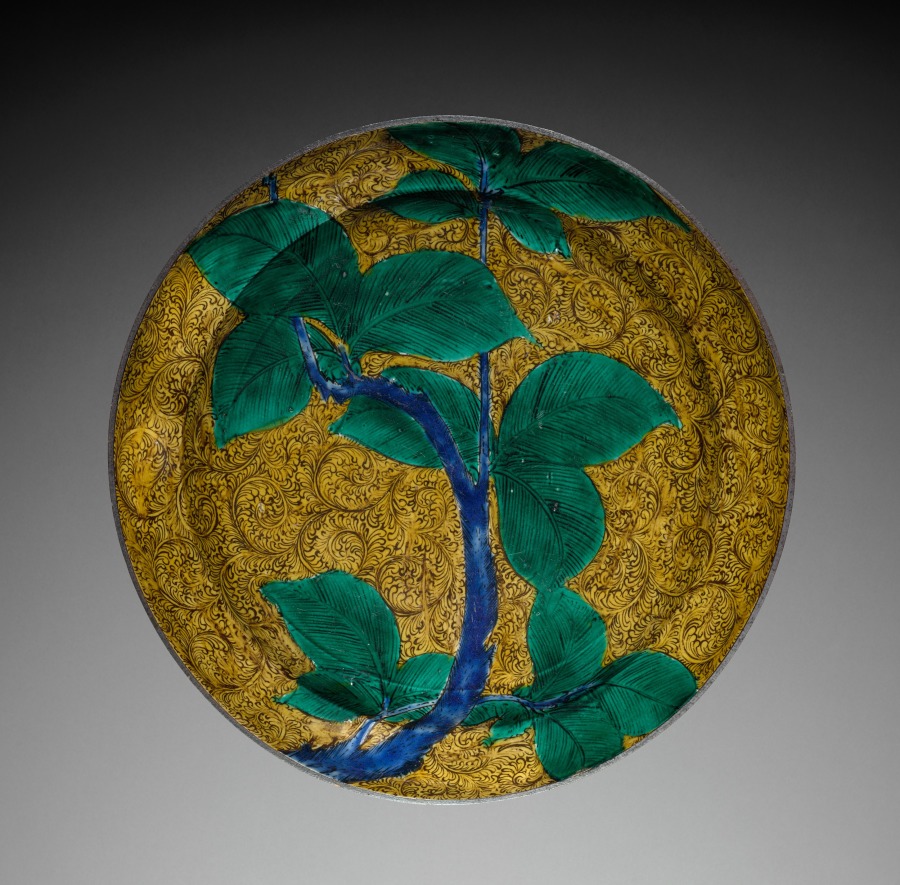| schema:description 10 | "technique: Porcelain with underglaze black and overglaze enamel (Hizen ware, Ko-Kutani style)" |
| schema:description | "culture: Japan, Edo period (1615-1868)" |
| schema:description | "creditline: Severance and Greta Millikin Collection" |
| schema:description | "measurements: Diameter: 33.4 cm (13 1/8 in.); Overall: 6.2 cm (2 7/16 in.)" |
| schema:description | "type: Ceramic" |
| schema:description | "tombstone: Large Dish with Persimmon Branch, mid- to late 1600s. Japan, Edo period (1615-1868). Porcelain with underglaze black and overglaze enamel (Hizen ware, Ko-Kutani style); diameter: 33.4 cm (13 1/8 in.); overall: 6.2 cm (2 7/16 in.). The Cleveland Museum of Art, Severance and Greta Millikin Collection 1964.245...(more)" |
| schema:description | "wall_description: This large plate is considered to have been produced in Kyushu, and is in a palette of Ko-Kutani style works called <em>aode</em> (literally, bluish-green hand) for the deep blue, green, purple, and yellow overglaze enamels that completely cover their surfaces. Ko-Kutani means “old Kutani,” and can refer to two kinds of porcelains. One kind is said to have been produced in the village of Kutani in present-day Ishikawa prefecture in the mid-1600s through the early 1700s. The other kind, decorated with similar glazes and designs, was produced in the former Arita domain of present-day Saga prefecture in Kyushu....(more)" |
| schema:description | "collection: Japanese Art" |
| schema:description | "id: 140273" |
| schema:description | "current_location: 235A Japanese" |

